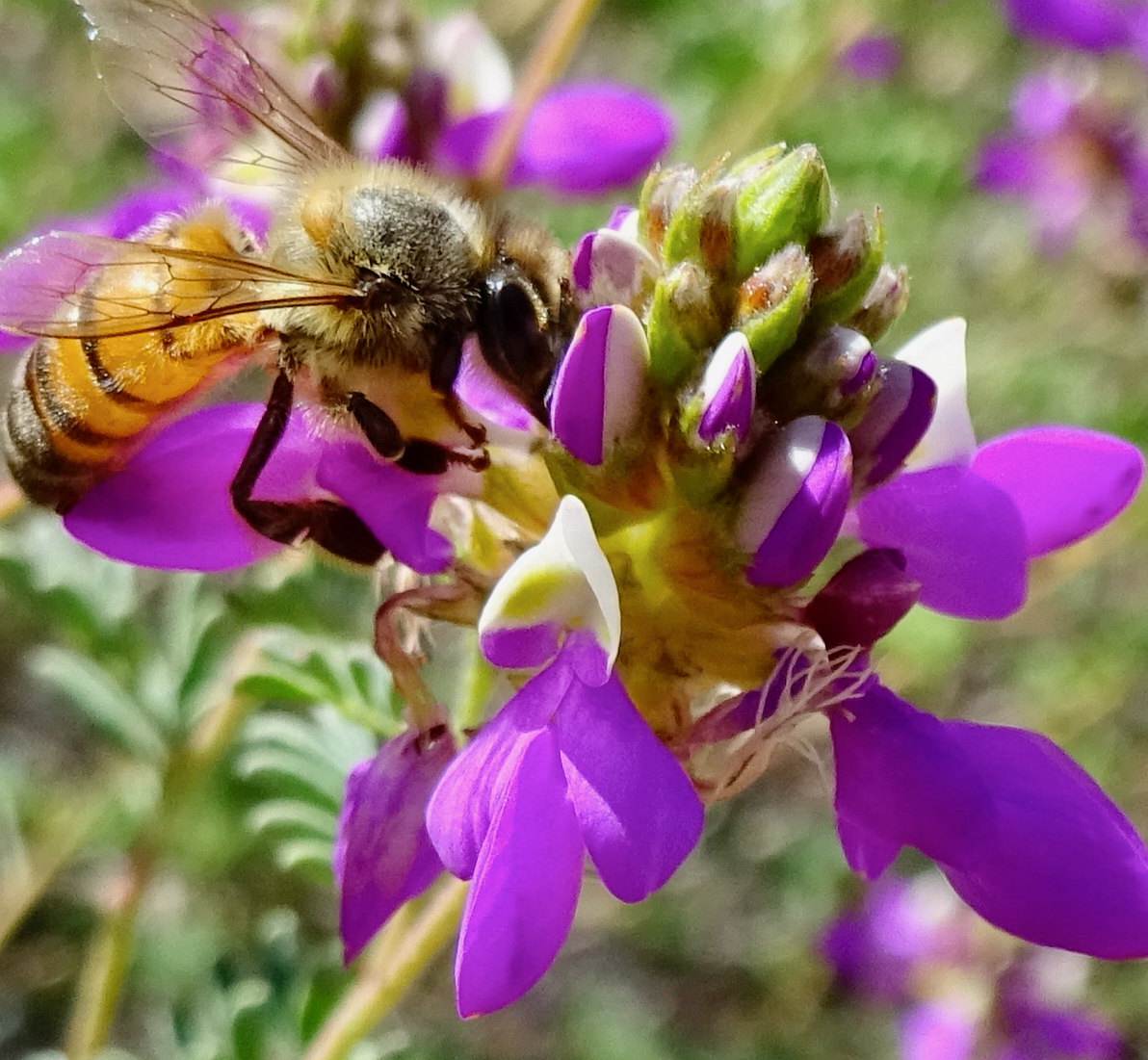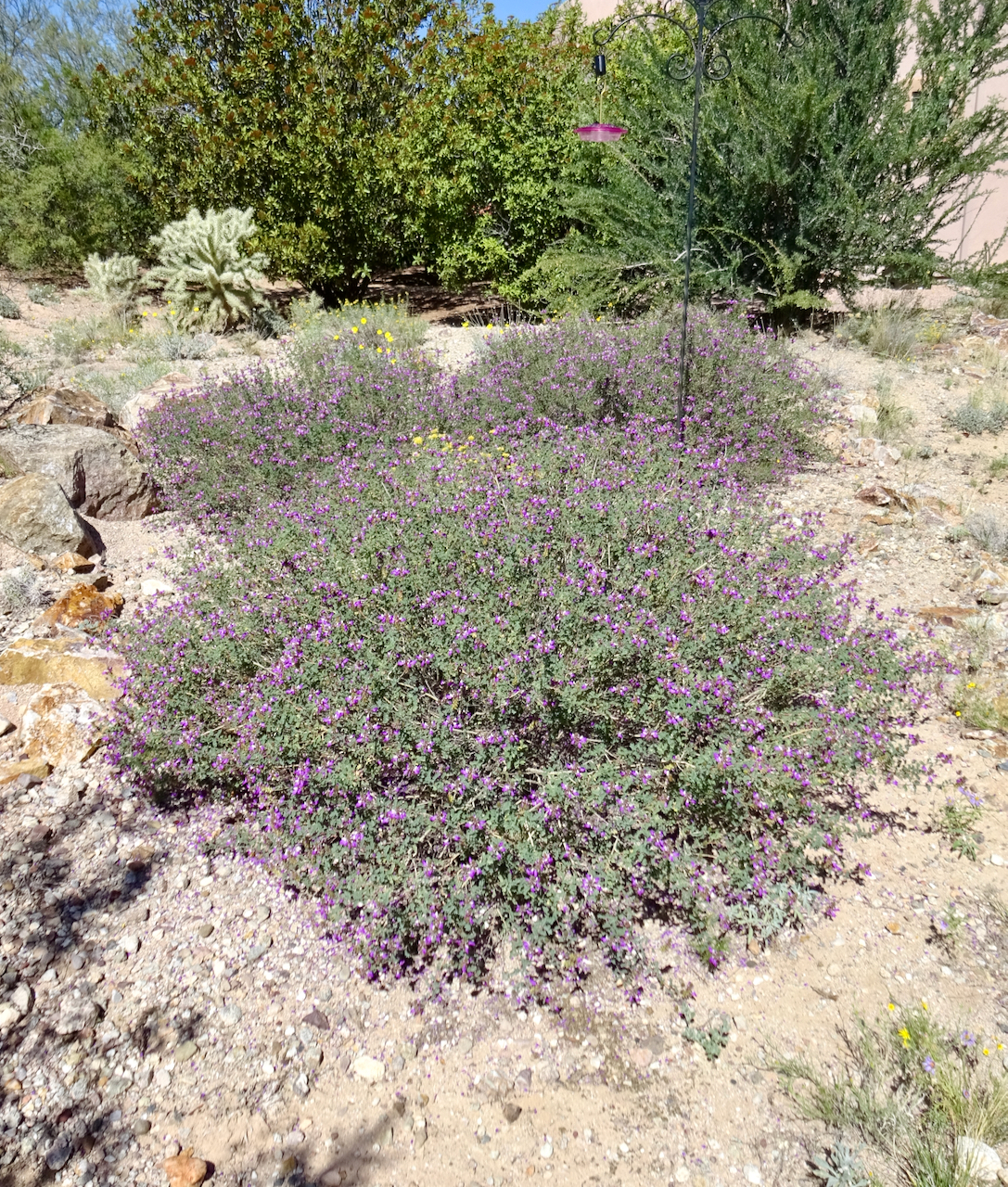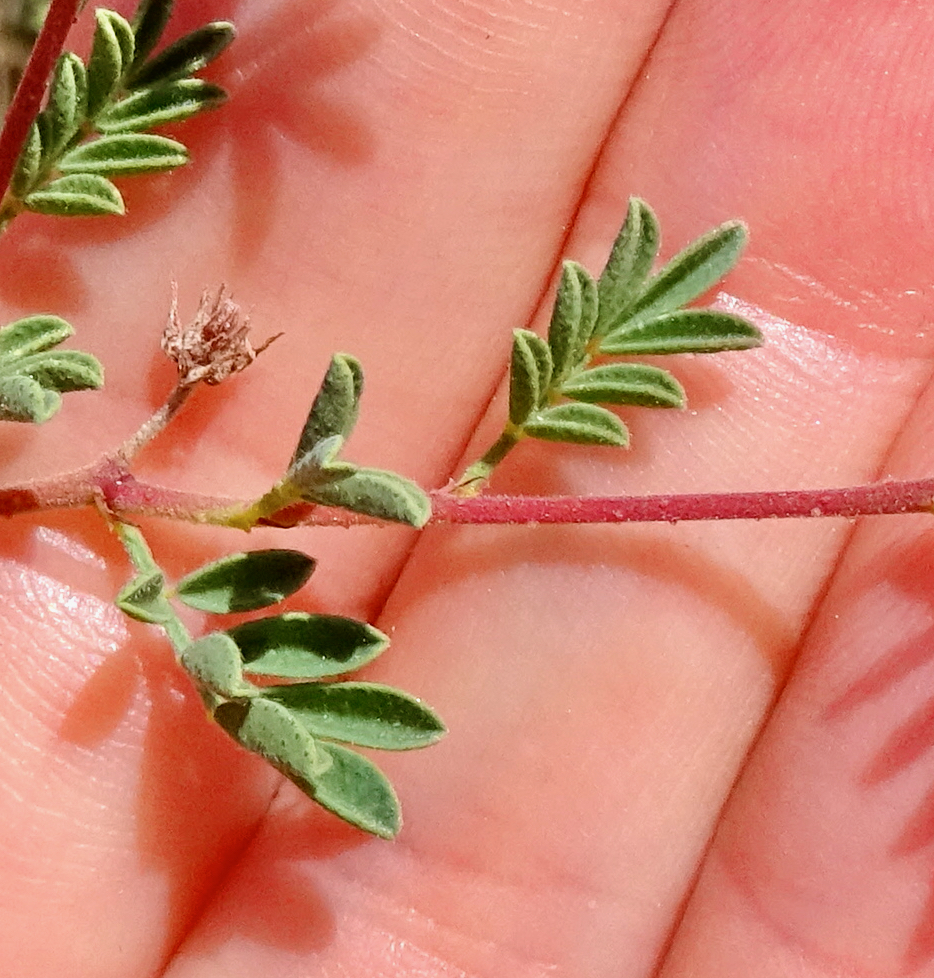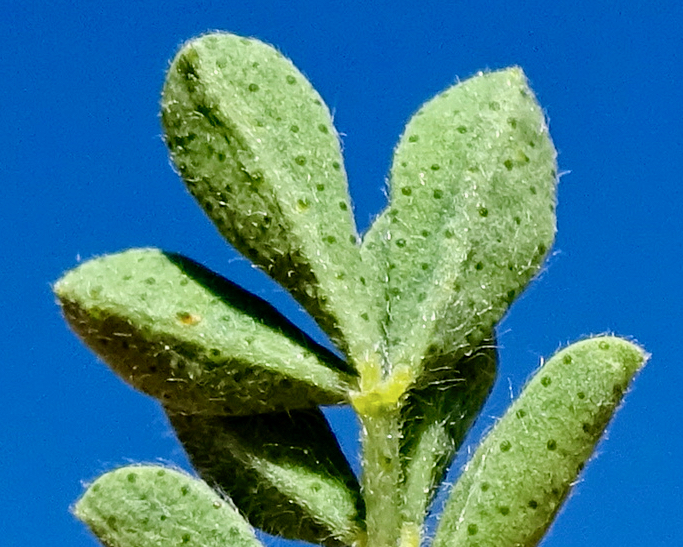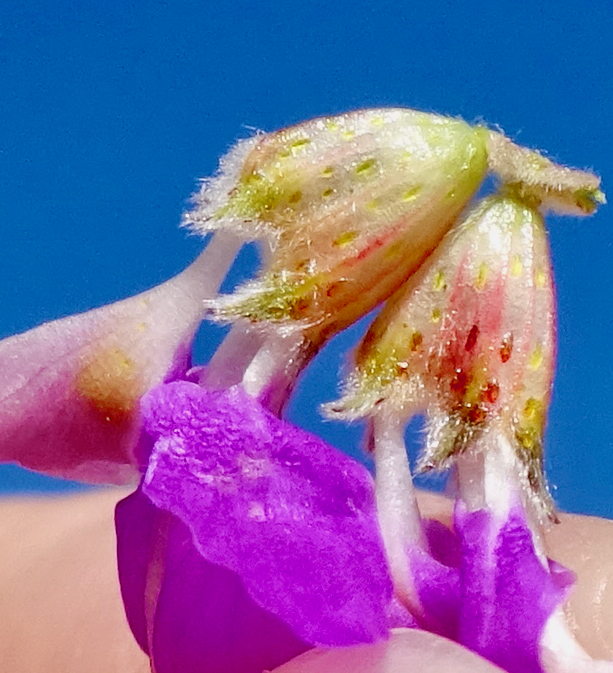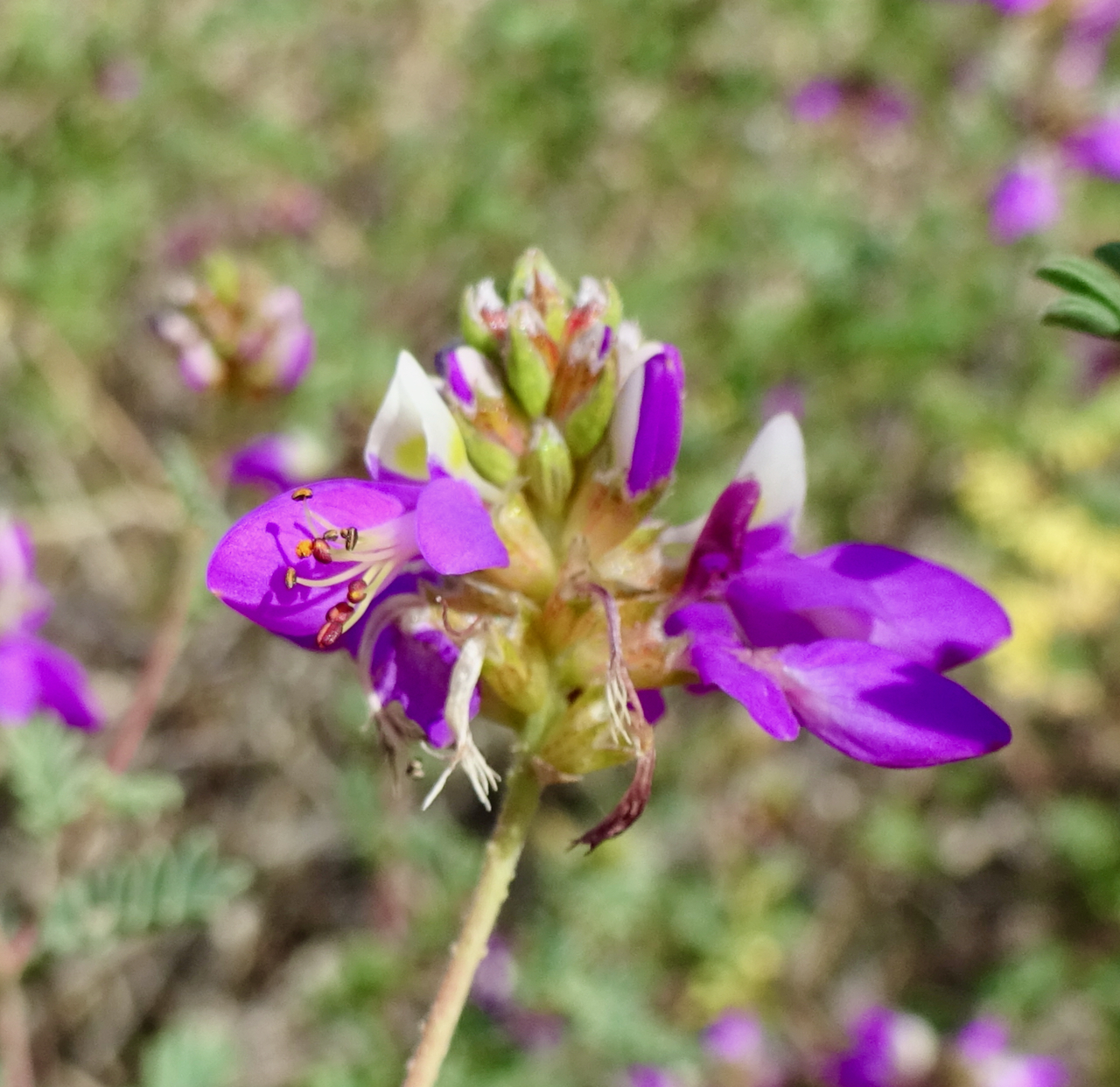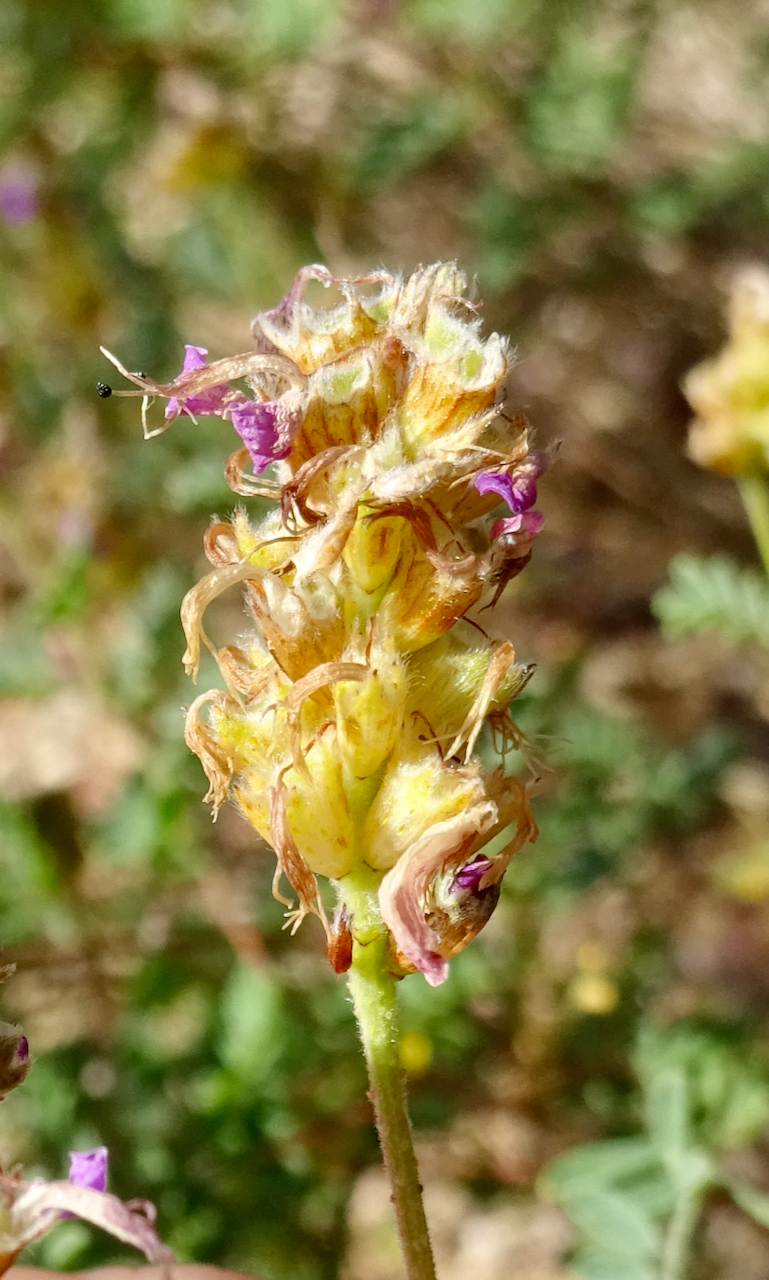Black Dalea
Dalea frutescens
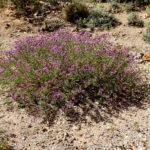
About the Plant
Black dalea is a small, evergreen shrub native to Texas, New Mexico, and northeast Mexico. Though it blooms only in the fall, it is a great addition to a landscape. It stays small (to 3 feet by 3-4 feet after several years), needs extra water only during the hot summer months, and produces only small amounts of liter. Combine it with plants with yellow (such as desert marigold or bahia) or red flowers (such as California fuscia or autumn sage) for a classic look.
Black dalea needs little maintenance. The forms stays naturally tight and small, so pruning is needed only occasionally and only if the plant gets leggy (prune in spring, can be cut back by half). The seed pods are small, with only one seed. They do not need to be cut off, or even raked up, to maintain an attractive appearance.
If the plant is irrigated, seeds of other plants may germinate under the foliage and grow up into it. These plants should be removed. It is natural for this plant to lose some, even most, of its leaves in winter. Significant leaf loss in summer suggests irrigation is needed. Black dalea does best in full sun and well-drained soil.
Notes:
- At garden centers, you may see this plant as Sierra Negra™.
- Rabbits may nibble on the thin stems.
Wildlife value: An exceptional bee plant. Butterflies may also visit the flowers. Some daleas are larval plants for the Southern Dogface Butterfly.
More Information
Weekly Plant on daleas
Horticultural information from Texas A&M
Horticultural information from ASU
Map of distribution in US (yellow indicates plant is rare)
In books:
Native Plants for Southwestern Landscapes by Judy Mielke, page 118.
Perennials for the Southwest by Mary Irish, page 124.
